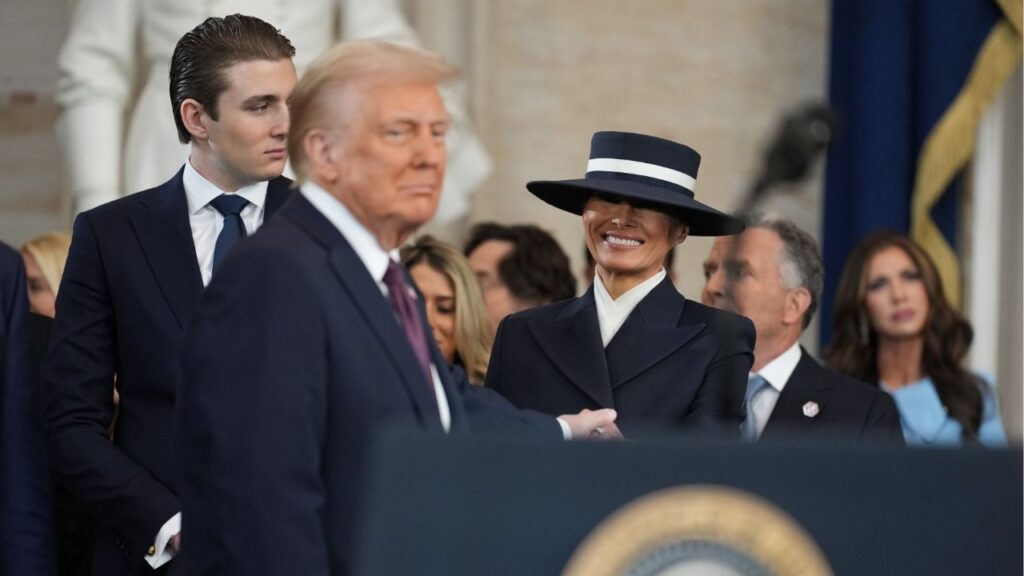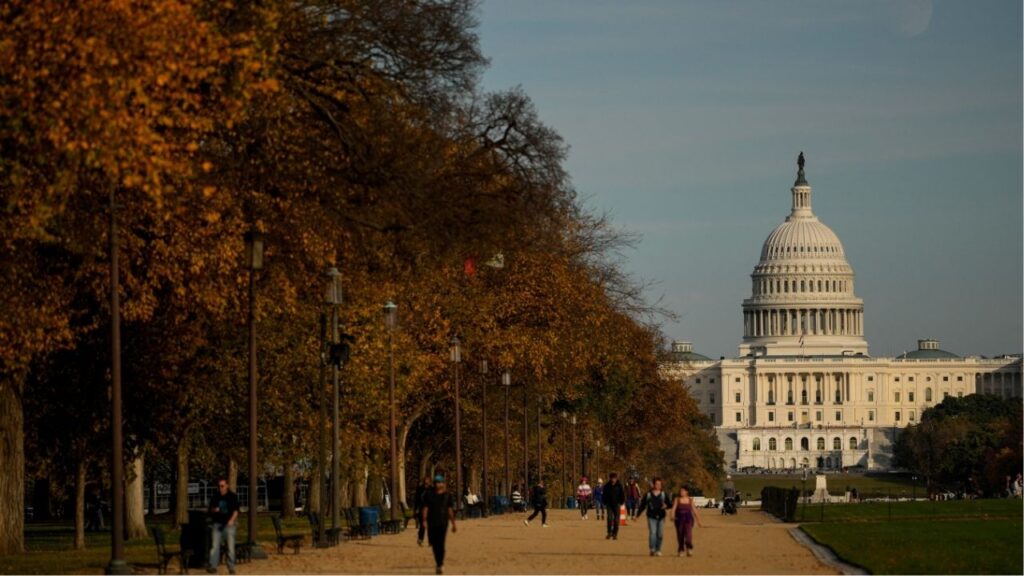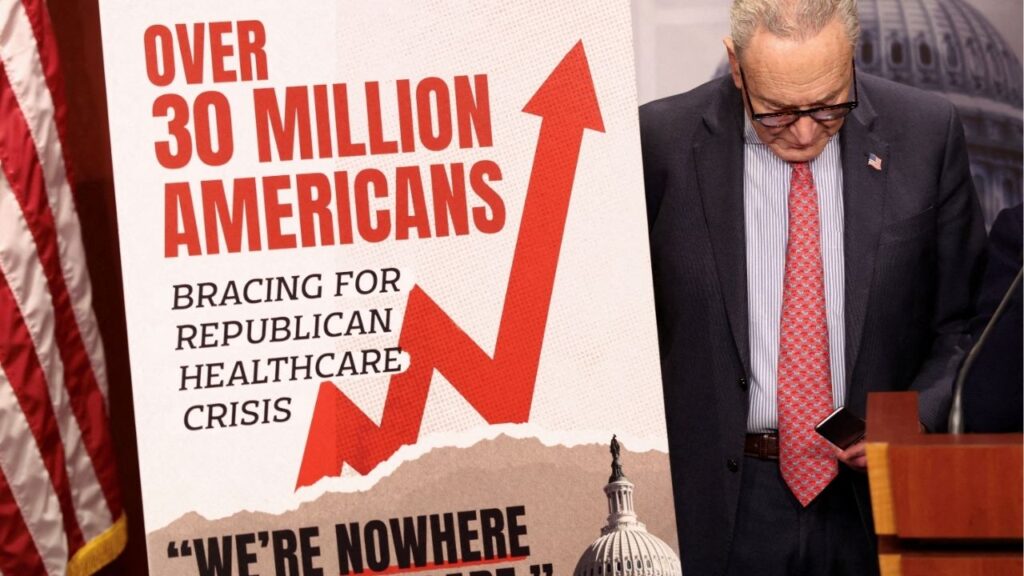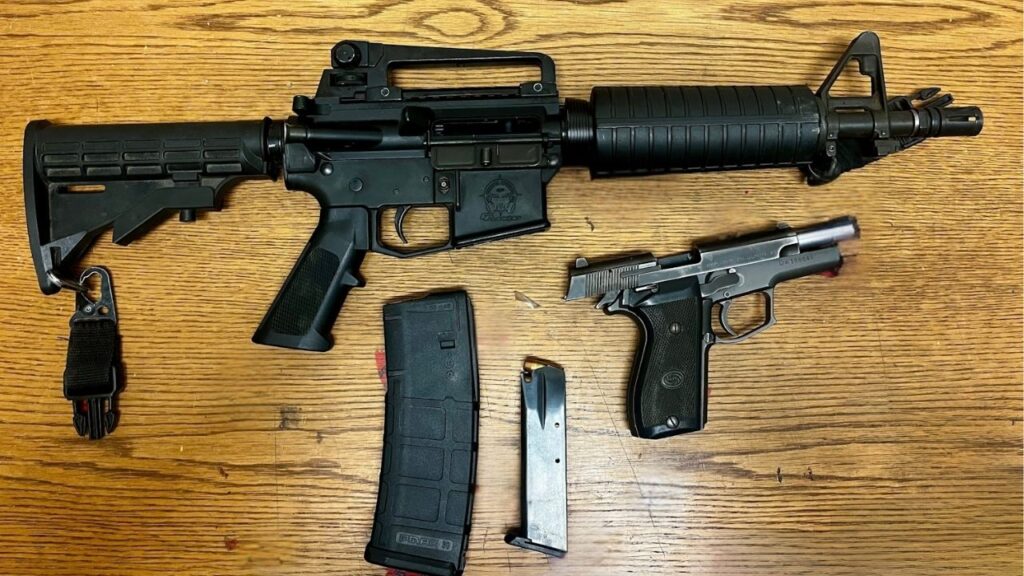Share
|
Getting your Trinity Audio player ready...
|
Details are rolling out on the second effort to pass a county-wide sales tax that would raise $1.4 billion for new facilities and deferred maintenance at Fresno State.
In 2022, proponents told voters that Measure E would help pay for new facilities at Fresno State, devoting two-thirds of the income to academics and one-third to athletics.
This is the first in a series of stories examining the Measure E Redux sales tax proposal that may appear on the March 2024 ballot.
Funding a university through a sales tax measure had never been done before, according to the California State University office. Last year, voters turned down the effort, 52.86% to 47.14%.
The name of the tax measure has yet to be decided, but organizers hope that a project outline will be enough to sway voters this time around.
Details about how the money would be distributed are still being decided. While financial analysts at the state agree there is a dire need for investment in capital improvements throughout the CSU system, organizers want roughly $1.56 billion in upgrades and maintenance for Fresno State.
And, the measure’s leading cheerleader, developer Richard Spencer, hopes that this time support for the ballot measure will grow — resulting in approval on the March 2024 ballot.
A Look at the $1.4 Billion Wish List
The revised tax measure organizers are referring to as Measure E Redux would add .25% to every purchase over 25 years, up from the original .20% over 20 years. That would net an estimated $56.1 million annually to total $1.4 billion over the tax’s lifetime, accounting for modest inflation of about 2.6%, according to details from a Fresno State meeting agenda.
At the top of the project wish list campaign organizers sourced from the Fresno State’s Administration and Finance Department are $433 million in new or upgraded facilities to address academic needs. Listed are a new 1,200-seat concert hall for $45 million, an expansion of the Lyles College of Engineering School for $60 million, and a new nursing facility for $60 million, among others.
The project list outlines $240 million for Fresno State athletics.
(For a look at all of the proposed projects, scroll to the bottom of this story.)
“The CSU doesn’t fund much of anything that’s on that list,” said Tim Orman, general consultant for the campaign.
Fresno State on May 9 rolled out a largely unfunded “Elevate” campaign identifying a need for $250 million to modernize its athletic facilities. That’s only $10 million more than what Measure E organizers identified in their new project list.
Fresno State Athletic Director Terry Tumey said the Measure E Redux campaign and the Elevate campaign were two separate efforts, but the tax measure “would enhance this tremendously.”
Tumey said phasing in elements of the Elevate campaign, starting with suites at Valley Children’s Stadium – a revenue generator – could fund the project without a sales tax measure, but it would take “a variety of different sources.”
Once these projects are underway, the price tags will likely increase, said Measure E’s Orman. But getting $15 million in donations for what could actually be a $60 million concert hall is easier if a sales tax raised 75% of the cost, Orman said.

CSU System Has Left Facility Maintenance Largely Unfunded
Fresno State ranks No. 8 in the CSU system for poorest facility conditions, according to the Legislative Analyst’s Office. Across the entire CSU system, the LAO estimates $3.1 billion will arise in capital renewal needs over the next 10 years, averaging $313 million annually. The LAO estimates $6.5 billion in total deferred maintenance in the system.
An internal document from Fresno State in March 2020 stated that 77% of buildings at Fresno State are more than 30 years old and 62% are more than 60 years old.
Fresno State has a backlog of $360 million in deferred maintenance, according to Vice President of Administration and Finance Debbie Astone.
Ongoing spending to cover maintenance is estimated to be about $15 million annually.
“A sustainable revenue source to address these major deficiencies is needed as the level of annual State support to the CSU system is not sufficient,” Astone said in an email.
Deferred Maintenance a System-Wide Problem
Astone said maintenance for buildings is an ongoing process and funding for it falls in the university’s operating budget.
Keeping up with air conditioning, plumbing, lighting, and elevator needs is expensive.
The CSU system leaves budgeting for building maintenance largely to the discretion of campus presidents.
While presidents are responsible for ensuring “appropriate resources” are available for building needs, there is no minimum level of spending for capital renewal.
Many buildings throughout the system are reaching their 30- and 40-year marks, said Jennifer Pacella, manager of the higher education unit with the LAO.
When these buildings were constructed, plans weren’t put in place about how to fund ongoing maintenance, Pacella said.
Pacella said the LAO report should be a warning to administrators that budgeting for ongoing maintenance should be considered when undertaking major capital projects.
Fresno State’s Budget

Paying for Capital Projects at CSUs and UCs is Balancing Act
Salaries and benefits make up 75% of expenditures at Fresno State. Operating costs take 13%. The remainder goes to student grants.
Ten years ago, Gov. Jerry Brown authorized CSUs to float their own bonds to cover major capital projects such as new facilities or substantial. Before that, bonds had to go before the Legislature for approval.
The state will allow general fund money to go toward retiring bonds for academic and some athletic capital projects – namely those that don’t pay for themselves – but such funding would take away from other spending such as salaries or informative technology improvements, the LAO’s Pacella said.
Proposition 55 — an extension of Proposition 30 — taxes individuals making more than $250,000 to support K-12 schools and state community colleges, leaving out the CSUs. The measure added up to three percentage points on the income tax, an increase of over 30% for some taxpayers.
With the exception of the 2020-21 school year, CSU employees have received raises every year, going back to the 2017-18 academic year.
“It comes down to the basic trade-off any agency has with the things it wants to do,” Pacella said.
University System Revenue Breakdown
Nearly 60% of Fresno State’s budget comes from the state, according to its 2022-23 general fund revenue summary. University fees make up 39.01% of revenue.
Student tuition has gone up once in the last decade, according to the LAO, which says there is room to raise tuition. But tuition hikes would come as enrollment at the CSUs has dropped to less than 360,000 system-wide – the lowest since the 2014-15 school year.
Enrollment declines at Fresno State were among the lowest in the CSU system.
Of the $12.4 billion the CSU system received for the 2022-23 school year, $5.1 billion came from the general fund while $3.7 billion comes from tuition and fees. Anticipating a flattening of tuition and fees, Gov. Gavin Newsom increased the amount paid by the general fund from the 2021-22 school year to the 2022-23 school year. The remainder comes from federal sources and other funds such as parking and housing fees. The lottery accounts for a sliver of the budget.
A new education bond — SB 28 — is being reviewed by the Senate Appropriations Committee. The $15 billion bond would provide $2 billion to CSUs at a total price tag of $25.2 billion, according to a Senate Appropriations Committee analysis.

While Tax is Local, Organizers Say a Third of Revenue Would Come From Out-of-Towners
Fresno County residents made up 51.9% of enrollment at Fresno State in Fall 2022. Students from Tulare, Kings, Madera, and Merced counties made up 19.5% of enrollment. Orman said getting a tax measure approved in four counties or beyond would be “a nightmare.”
At the same time, visitors and tourists to Fresno County, as well as online shoppers getting goods originating in Fresno County, would contribute to the fund Measure E fund. Orman estimates a third of Fresno County’s sales tax revenue comes from out-of-town spending.
County Appointed Committee Would Oversee the Fund
Distribution of the funds would be at the discretion of a citizen’s oversight committee appointed by the Fresno County Board of Supervisors, said Orman. The supervisors would decide how members are selected. The plan now is for five members, but two more could be added, perhaps the Fresno State president and the CSU chancellor or their designees.
Discussion by the oversight committee would be publicly broadcast and would be subject to the Brown Act, said Orman.
More Spending, Broader Support for Sales Tax Measure Envisioned
Orman said the origins of Measure E began when he was asked by Spencer, a longtime Fresno State booster, if Measure P funds could go to renovations at Valley Children’s Stadium. Measure P is the sales tax approved in 2018 to fund parks in the city of Fresno.
Orman replied that it would be easier to start a new tax initiative to support Fresno State. Spencer, who is president of Harris Construction, spearheaded Measure E single-handedly for the 2022 November ballot.
Orman said that this time around, he expects thousands of donors to fund the campaign.
According to polling conducted by the Measure E campaign shortly before the 2022 measure, 58% of Republicans indicated that they opposed Measure E and 30% supported it.
Among Democrats, it was 66% in favor and 25% against, Orman said.
Independents were 57% against and 35% for.
A new taxpayer accountability act could complicate the second Measure E try. In February, the Taxpayer Protection and Government Accountability Act qualified for the November 2024 ballot. The initiative would require two-thirds voter approval for a local tax increase, applying retroactively to all measures passed since Jan. 1, 2022.
Will the Projects Be Decided by Competitive Bidding?
California’s education code gives the CSUs full power and responsibility for construction facilities, said Fresno State’s Astone in an email.
There are different levels of project involvement ranging from design only, build only, a combination of both, and construction management at-risk. All involve either a competitive bid or request for qualification or request for proposal “depending upon the best and most cost-effective delivery method for the campus,” Astone said.
Project architects and engineers have to come from a pre-qualified list of firms.
In April, GV Wire reported that the California State Supreme Court ruled against Fresno Unified School District and Harris Construction in an 11-year-old lawsuit involving lease-leaseback construction projects.
The courts ruled that a contract between the school district and Spencer’s Harris Construction to build Gaston Middle School was illegal because the district financed the construction with voter-approved bonds instead of having Harris finance it, a requirement of lease-leaseback contracts.
Orman said that bidding rules for construction projects would fall under rules from Fresno State. He added that he would look into adding explicit rules requiring competitive bidding processes.
Astone said that requests for qualifications and requests for proposals are “typically” public documents, available through public records requests, with the exception being for proprietary information.
The Measure E citizen oversight committee would contract for an annual external audit each year.
Measure E Redux Project List

RELATED TOPICS:
Categories
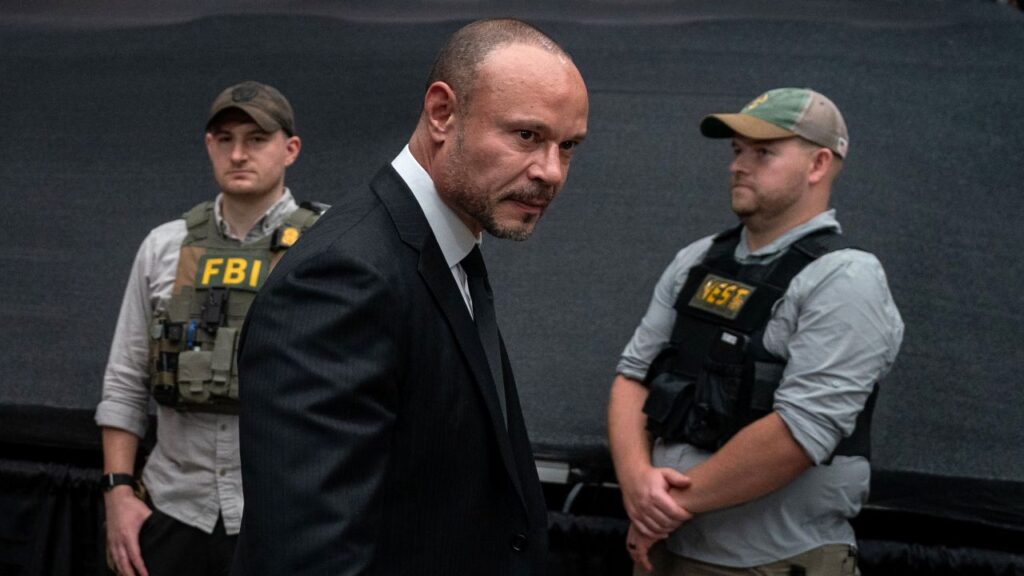
Dan Bongino to Step Down From FBI
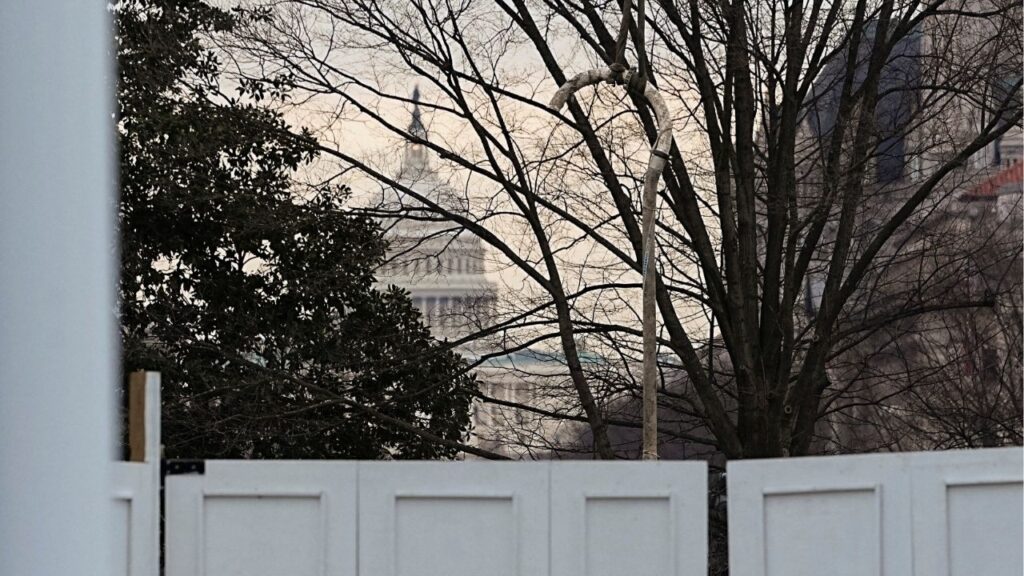
Judge Allows Trump’s Ballroom Project to Proceed for Now

Canva Down for Thousands, Downdetector Reports






